Stop crocodile slaughter
Call on the Minister for Environment and Water, Murray Watt, to do the right thing for Australian crocodile welfare.
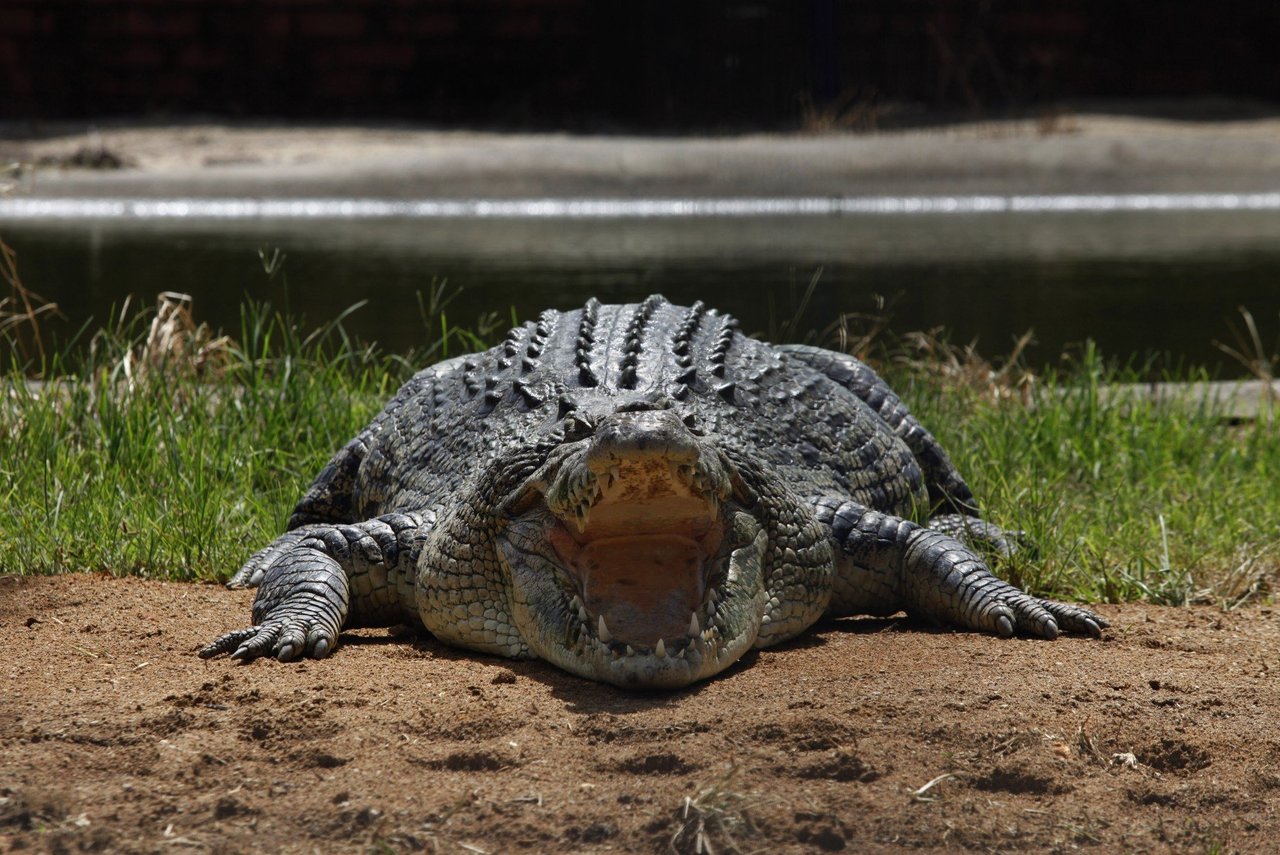
Crocodiles have been around for 240 million years. They play a vital role in keeping waterways clean and healthy for many other species.
Crocodiles have highly developed vision, hearing and sense of smell especially, allowing them to probe their surroundings. These cold blooded reptiles rely on the external environment to regulate their body temperature. This involves moving in and out of water, basking on land, shade seeking and mouth gaping. Their behaviour is subtle – although they spend large amounts of time motionless, they are often alert watching their environment.
There are 13 different crocodile species. The world’s smallest crocodile is the dwarf crocodile which lives in the rainforests of West and Central Africa. The dwarf crocodile rarely grows to more than 2 meters in length and weighs around 18–32kg.
Saltwater crocodiles are the largest species and the largest living reptile. Some other common names for the saltwater crocodile are: Estuarine Crocodile or Saltie.
Large male saltwater crocodiles are known to defend their territory and females are protective of their nest and hatchlings. On average, adult males range from 4.3 to 4.9m in length and weigh 408 to 522kg, but can reach up to 7m and weight over 1000kg. Females are much smaller, rarely growing to over 3m in length.
In the wild, Saltwater crocodiles can live for more than 70 years. The species' distribution in Australia ranges from Rockhampton in Queensland throughout coastal Northern Territory to near Broome in Western Australia. An estimated 100,000 saltwater crocodiles live in the Northern Territory.
Saltwater crocodiles mostly eat fish, but will eat almost anything that they can overpower which can include turtles, goannas, snakes, birds, cattle, buffalo, wild boar and mud crabs. Hatchlings and juvenile crocodiles feed on insects, crustaceans, small reptiles, frogs and small fish. Their extremely powerful jaws are responsible for creating the strongest bite in the animal world.
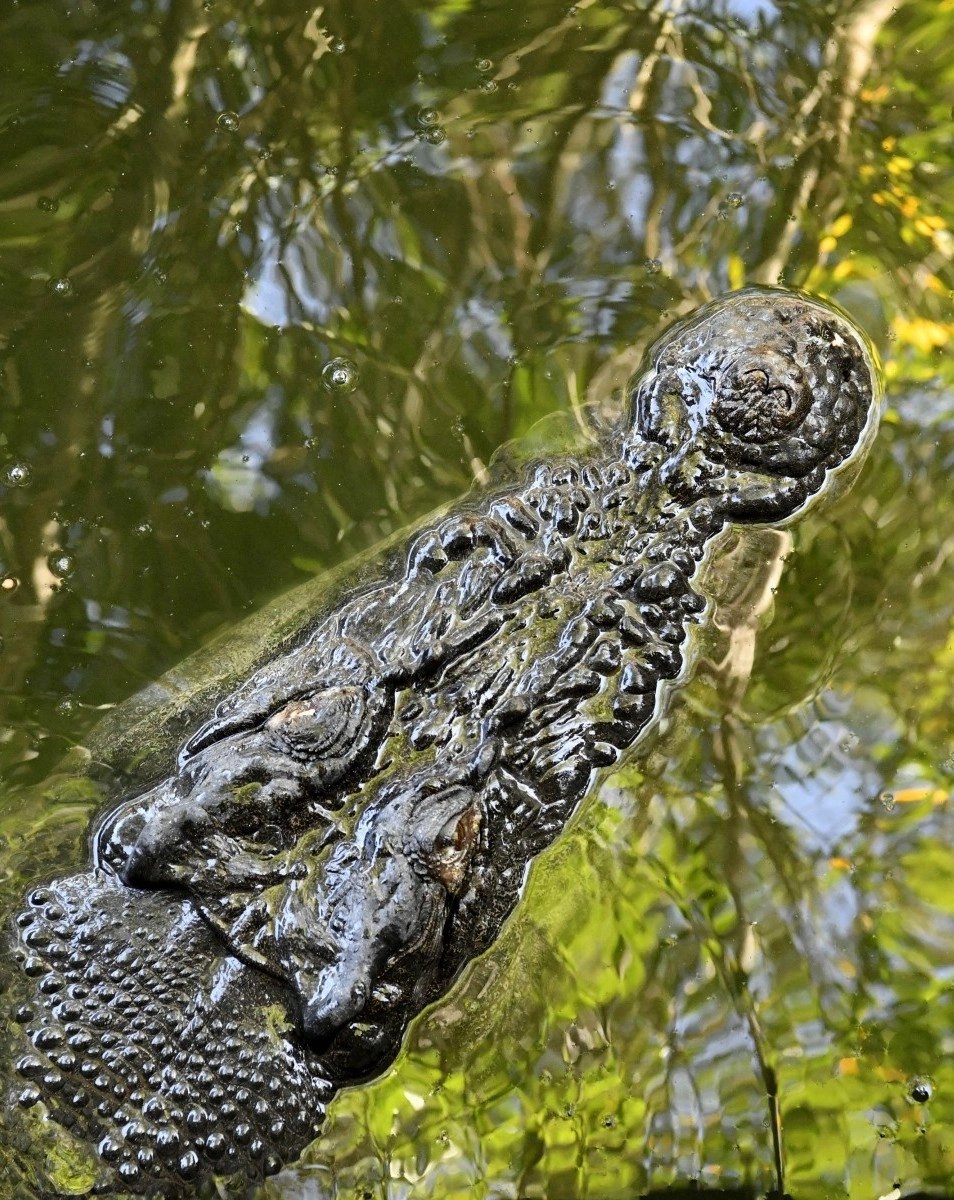
Some crocodile species are endangered and are protected in many parts of the world. This is because during the 20th century demand for crocodile skin products – mostly bags and shoes – meant that crocodiles, including the Orinoco, Siamese and saltwater, were nearly hunted to extinction.
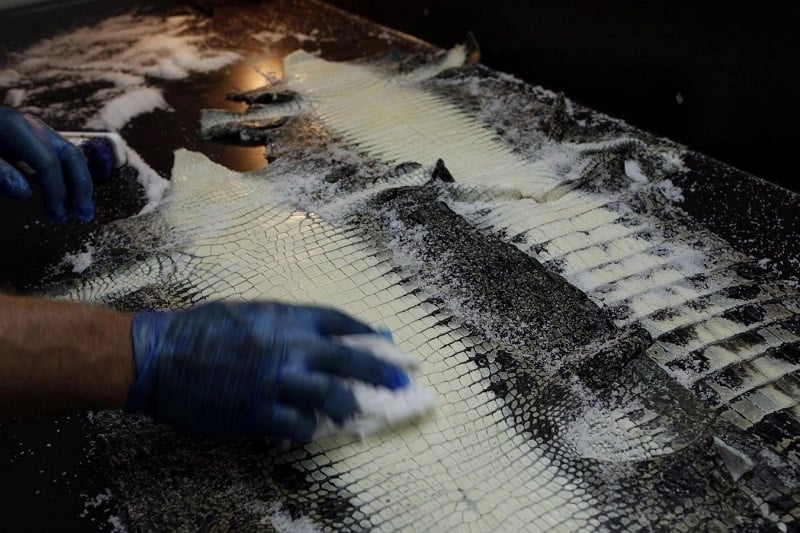
Unfortunately, today’s protected status does not stop crocodiles worldwide from being cruelly treated through the wildlife trade. They are poached and killed for their skins and meat, and some species – like the saltwater, Nile and Siamese crocodiles are inhumanely and intensively farmed for their skins and meat.
Each year, thousands of saltwater crocodiles are farmed and killed in Australia. Mostly in the Northern Territory and Queensland, all to be turned into non-essential, luxury handbags, belts and wallets. They are truly victims of fashion.
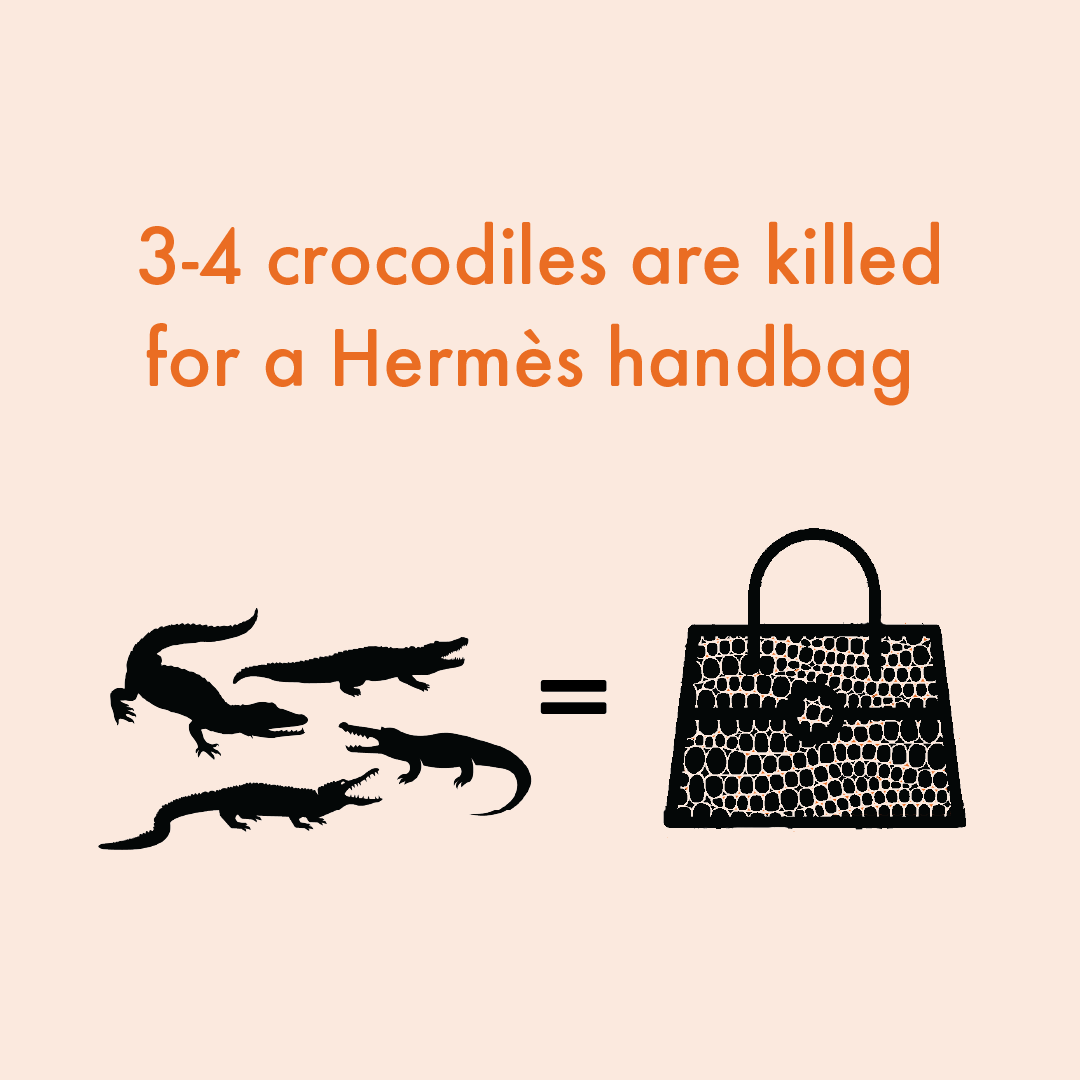
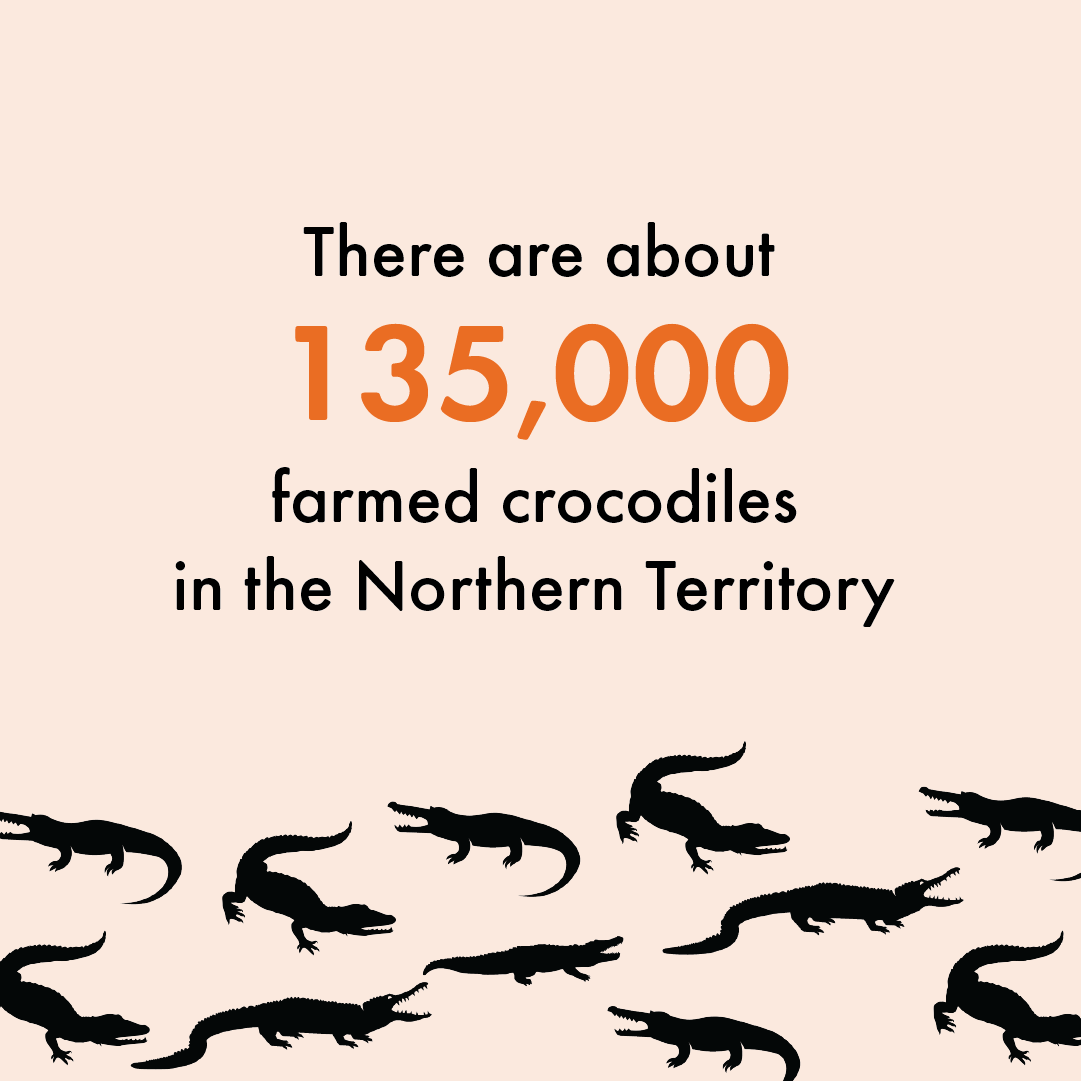
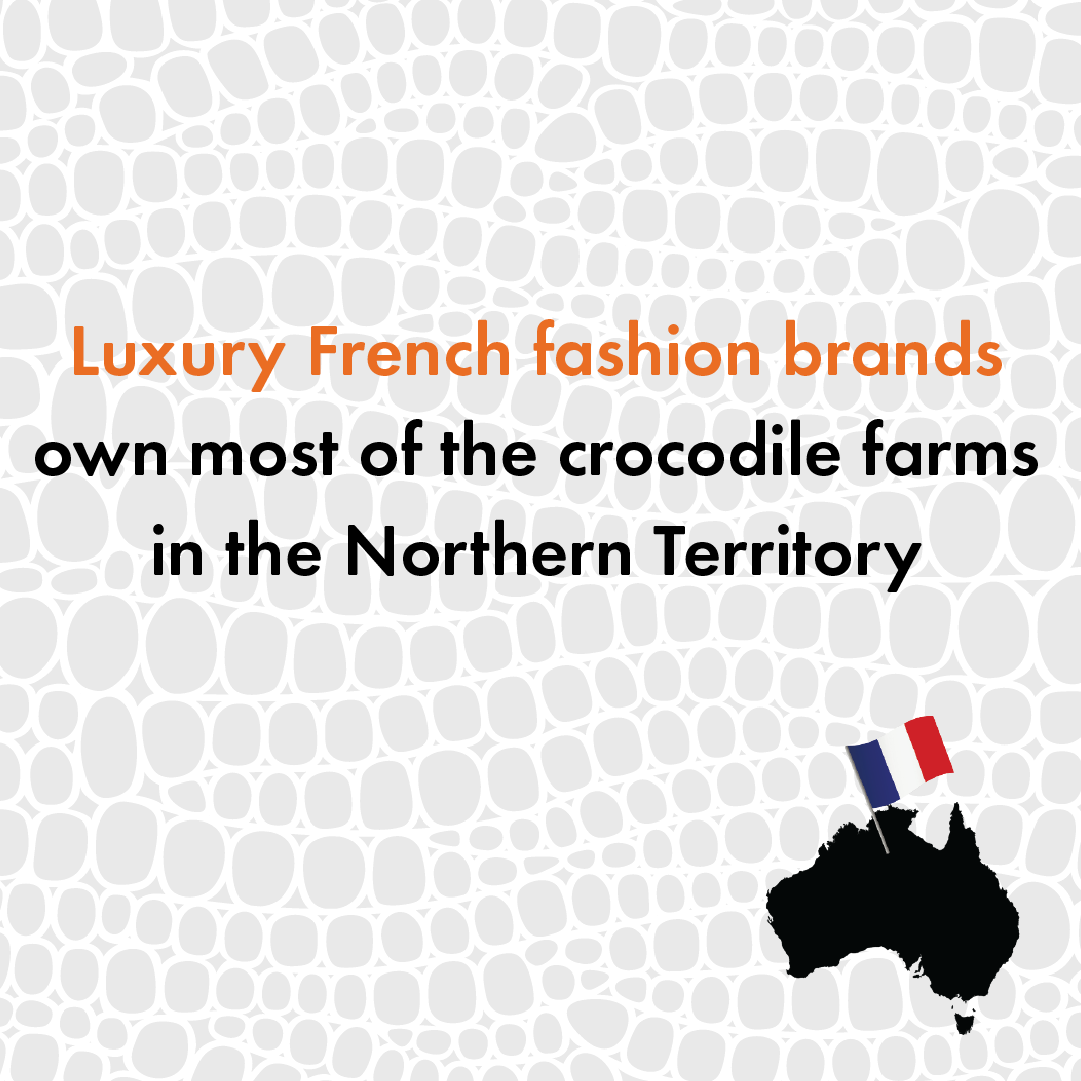
Crocodiles are sentient beings who experience pain and pleasure. To keep them confined in small plastic-lined concrete enclosures for years before cruelly slaughtering them for non-essential fashion items is cruel.
In the wild, crocodiles inflict serious injuries on each other and most adults are battle-scarred. On farms, their interactions must be severely limited so their skins remain undamaged by bites and scars. For the last year of their life on farms they are kept in solitary enclosures.
In many countries, crocodiles are electrocuted to immobilise them before travel or slaughter. The charge is given on the back of the neck for 4-6 seconds through a pole with a set of metal prongs on the end.
The trade and farming of wild animals creates the risk of future pandemics. While crocodile farming doesn’t pose a known zoonotic disease risk, the industry helps to validate wildlife farming in general and undermines the Australian government’s ability to call for an end to the global wildlife trade.
Call on the Minister for Environment and Water, Murray Watt, to do the right thing for Australian crocodile welfare.
Wildlife trade
Right now, millions of wild animals are being captured, abused, bred, and mercilessly slaughtered so that the fashion industry can maximise their profit.
Pledge to not purchase, wear or promote any wild animal skins, feathers, or wild animal fur products.
All animals deserve to be protected from suffering and exploitation, regardless of whether they are cute, cuddly or even “scary”.

Join thousands of animal lovers fighting to protect wildlife and give farmed animals good lives. Sign up now to receive emails with all the ways you can help.